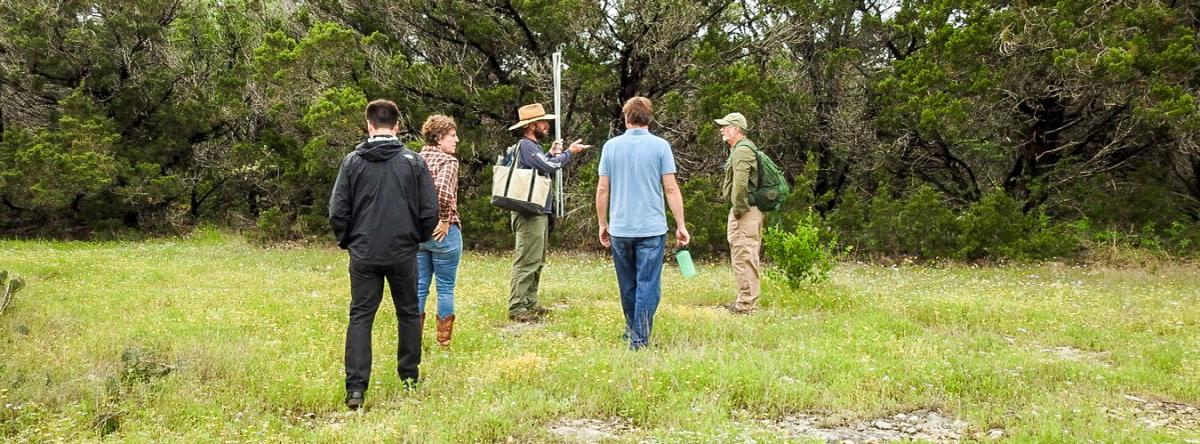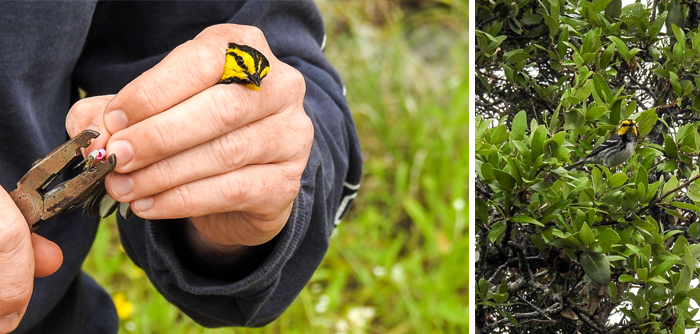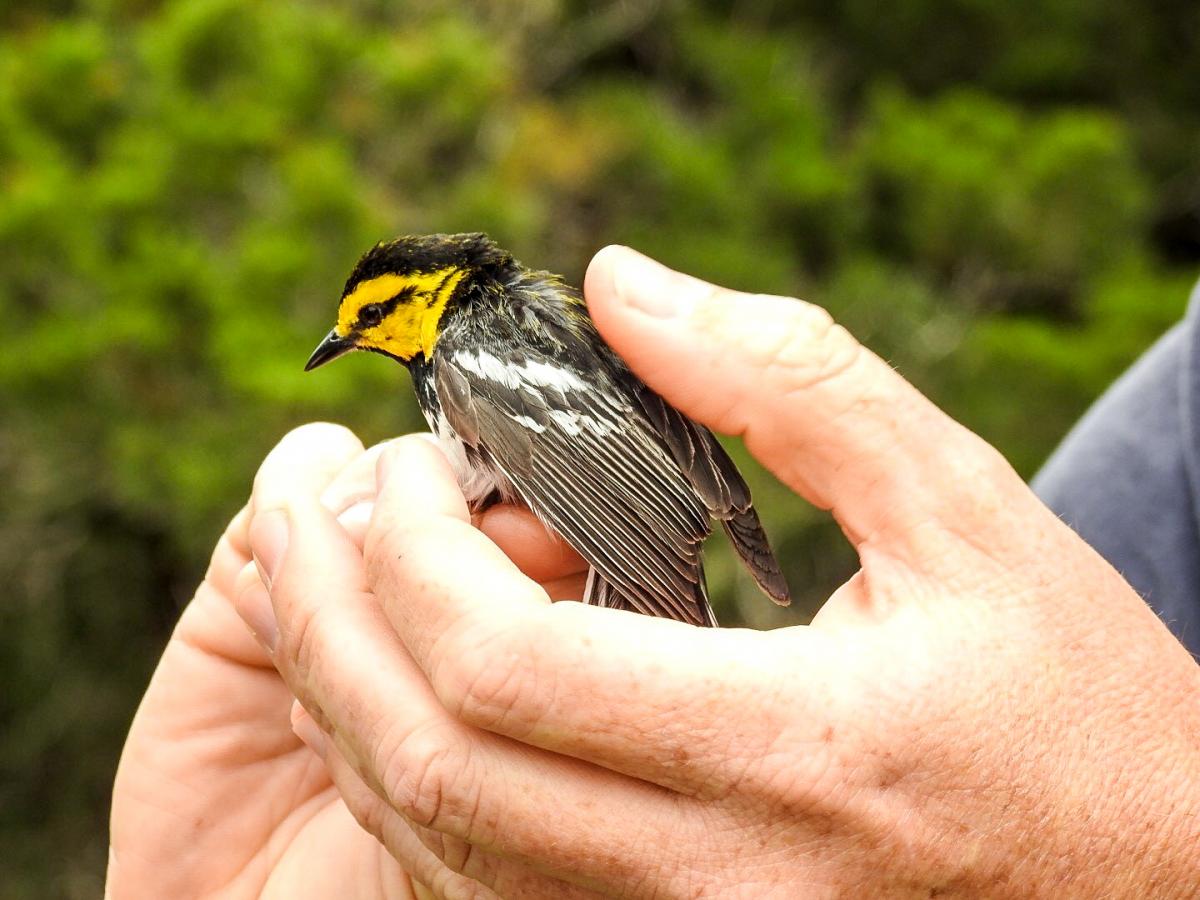Earth Month Message from Lucia Athens, Chief Sustainability Officer

It’s almost Earth Day, yet again. Spring is a special time of year in Central Texas. Not only are the wildflowers blooming, the native bees buzzing, and natural springs abundantly flowing, but many songbirds are nesting and preparing to raise their young. Both Golden-cheeked Warblers and Black-capped Vireos have migrated here from their winter habitat locations. Both birds are rare, endangered species that are lucky to have protected City of Austin conservation lands awaiting their annual arrival from Mexico. On the day I am writing this message, I’m fortunate to have visited a portion of the Balcones Canyonlands preserve called the Kent Butler Ecological Reserve. My guides from the Austin Water Utility are habitat and species experts.

“Wait, do you hear it? Is that the male?” Our guide listened intently to a buzz-like call, just as two tiny birds hurtled past overhead through the oak juniper woodlands. The biologists call up the birds by playing recorded songs. Eventually, a male warbler (Setophaga chrysoparia) flew into the net they had set up. Once captured, the bird was carefully tagged with a colored band that would help the scientists track his behavior. It was amazing to see the tiny bird up close, with its yellow face and black crown and throat. Once the tagging was over, he quickly flew away and called to us from the brush, letting us know he was unfazed and back to protecting his territory and his female mate.

 If all goes well, this mating pair will lay eggs soon and raise 3-4 young birds who will hatch and carry on the Golden-cheeked Warbler legacy. These birds nest nowhere else in the world but Central Texas, in tune with “Keeping it Weird”. I felt deeply grateful for the opportunity to experience this rare bird in person, for the dedicated work of City staff to manage and monitor its habitat, and for all the organizations who are working so hard to set aside land like this, protecting it from development.
If all goes well, this mating pair will lay eggs soon and raise 3-4 young birds who will hatch and carry on the Golden-cheeked Warbler legacy. These birds nest nowhere else in the world but Central Texas, in tune with “Keeping it Weird”. I felt deeply grateful for the opportunity to experience this rare bird in person, for the dedicated work of City staff to manage and monitor its habitat, and for all the organizations who are working so hard to set aside land like this, protecting it from development.
This Earth Day, it’s time to step outside. Turn off the TV, the computer, and the phone. Discover a trail you have never walked before, or return to a favorite park. Go for a dip in a spring-fed pool. Notice how nature shows up in your neighborhood. What birds do you see and hear? What plants are blooming? Can you name at least three native species in your yard or on your block? Even further, can you design your home landscape to help songbirds, butterflies, and other wildlife find what they need to thrive?
While there is lots of nature outside the city, there is also much nature nestled within our urban environs. Habitat destruction and fragmentation is one of the biggest risks to wildlife, and you can help by creating natural areas in your own yard.  You can plant milkweed for monarch butterflies and small understory trees like redbuds or Mexican plums, where birds can find shelter. You can avoid pesticides and create “rough” areas of your yard where fireflies like to lay their eggs.
You can plant milkweed for monarch butterflies and small understory trees like redbuds or Mexican plums, where birds can find shelter. You can avoid pesticides and create “rough” areas of your yard where fireflies like to lay their eggs.
The best place to get inspired and renewed is outside. So get off the couch this Earth Day and discover nature, whether miles from home or in your own backyard.

Here are some great resources for outdoor inspiration:
- 6 ways to explore the great outdoors
- Learn more about wildlife conservation in Austin
- Get connected with the Travis Audubon Society
- Find a City of Austin trail
- Explore the Violet Crown Trail
- Discover nature near you
